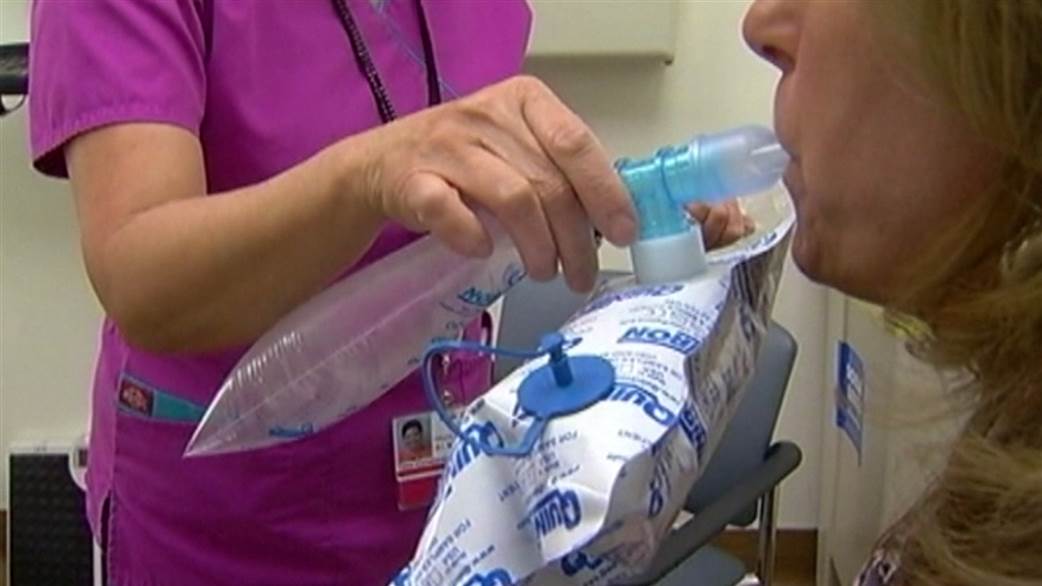Early Diagnosis of Esophageal and Gastric Cancer Now With a Breath Test

The first non-invasive test to detect esophageal and gastric cancer is now available, thanks to researchers at Imperial College London.
The test has been used in a multi-center clinical trial, on 335 patients. It can identity cancer, having 85% accuracy.
Researchers have published their test in JAMA Oncology today. The test will be very useful to clinicians to decide if their patients need more investigations or not. The breath test could become as common as blood tests.
Early Detection Saves More Lives
The lead author of the study is Professor George Hanna (Imperial College London). He said:
“We have been able to validate our cancer breath test for oesophageal and gastric cancer on a larger group of patients from multiple centers for the first time. Gastric and oesophageal cancers are mostly diagnosed a late stage when curative treatment might not be possible.”
Professor George Hanna continues explaining why the breath test is perfect for early detection of cancer:
“There is a real need for early detection of cancer when symptoms are non-specific and shared by benign diseases. Our breath test could be used as a first-line test before invasive investigations. Early detection of cancer gives patients more treatment options and save more lives.”
The usual diagnosis of oesophageal and gastric cancers is through an endoscopy. The procedure is invasive, as it required using a probe through the mouth and down the throat to see the inside of the stomach with a video camera. According to the study, only 2% of the patients recommended doing an endoscopy have been diagnosed with oesophageal or gastric cancer. Moreover, not many patients are referred for an endoscopy, as the procedure costs in the UK around £400-£600.
Identifying Chemicals Produced By Cancer
The test can identify certain chemicals in the exhaled breath that are present in oesophageal and gastric cancer. Cancer inside the body produces a different smell, containing volatile organic compounds (VOC), chemicals with carbon – found in all living things, and these smells can help doctors to identify the disease in its early stage.
In the breath samples in clinical trials on 335 patients found 163 patients with oesophageal or gastric cancer and the rest of 172 patients only had benign diseases or normal stomach.
After breathing through the device, the VOCs were then analyzed at the Division of Surgery’s breath analysis laboratory (at St Mary’s Hospital – Imperial College Healthcare NHS Trust).
Finally, more investigations will improve the breath tests. There will also be a larger clinical test to validate the results. In the future, the test will also be used to diagnose other types of cancer in the body.
0 comments